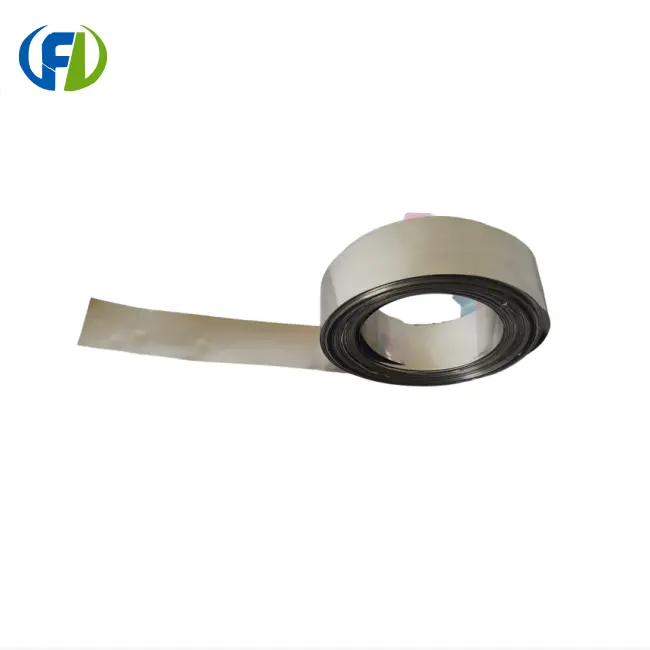Creep Test Methodologies
To fully understand and quantify the creep resistance of zirconium foil, researchers employ various sophisticated testing methodologies. These tests are designed to simulate real-world conditions and provide valuable insights into the material's behavior under prolonged stress at elevated temperatures.
Constant Load Creep Test
One of the most common methods used to evaluate the creep properties of zirconium foil is the constant load creep test. In this procedure, a sample of the material is subjected to a constant tensile stress while maintained at a specific high temperature. The elongation of the sample is measured over time, providing data on the creep rate and the material's resistance to deformation under these conditions.
Stress Rupture Test
Another crucial methodology is the stress rupture test. This test involves applying a constant load to the zirconium foil specimen at a predetermined temperature until failure occurs. The time to rupture and the minimum creep rate are recorded, offering valuable information about the material's long-term performance and durability under extreme conditions.
Thermal Cycling Creep Test
To simulate more dynamic real-world scenarios, thermal cycling creep tests are often employed. In this method, the zirconium foil sample is subjected to cyclic temperature changes while under constant stress. This test helps evaluate the material's resistance to thermal fatigue and its ability to maintain creep resistance under fluctuating temperature conditions.
Comparison to Nickel Superalloys
When discussing high-temperature materials, it's natural to draw comparisons between zirconium foil and nickel superalloys, which are renowned for their excellent performance in extreme environments. While both materials exhibit impressive properties, they each have unique characteristics that make them suitable for different applications.
Strength-to-Weight Ratio
Zirconium foil boasts a lower density compared to nickel superalloys, resulting in a superior strength-to-weight ratio. This characteristic makes zirconium an attractive option in aerospace and other weight-sensitive applications where high-temperature resistance is required. The lighter weight of zirconium components can contribute to improved fuel efficiency and overall performance in aircraft and spacecraft designs.
Oxidation Resistance
Both zirconium and nickel superalloys demonstrate excellent oxidation resistance at high temperatures. However, zirconium forms a stable, adherent oxide layer that provides exceptional protection against further oxidation. This self-healing property of zirconium oxide gives it an edge in certain corrosive environments where long-term stability is crucial.
Cost Considerations
While nickel superalloys often come with a higher price tag due to the complex alloying process and the cost of constituent elements, zirconium can be a more cost-effective solution for certain high-temperature applications. The relative abundance of zirconium and its simpler processing requirements can translate to lower overall costs in some industrial settings.
Microstructural Changes during Creep
Understanding the microstructural evolution of zirconium foil during creep is crucial for predicting and improving its long-term performance in high-temperature environments. The material undergoes several microscopic changes that influence its macroscopic properties and creep resistance.
Grain Boundary Sliding
One of the primary mechanisms of creep in zirconium foil at high temperatures is grain boundary sliding. As the material is subjected to stress and elevated temperatures, individual grains can move relative to each other along their boundaries. This process is particularly pronounced in fine-grained structures and can lead to the formation of voids or cavities at triple points where grain boundaries intersect.
Dislocation Creep
At higher stress levels and temperatures, dislocation creep becomes a dominant mechanism in zirconium. This process involves the movement of dislocations (linear defects in the crystal structure) through the material. The rate of dislocation creep is highly dependent on temperature and applied stress, and it plays a significant role in determining the overall creep rate of the material.
Dynamic Recrystallization
During prolonged exposure to high temperatures and stress, zirconium can undergo dynamic recrystallization. This process involves the formation of new, strain-free grains within the deformed microstructure. While this can lead to a temporary reduction in creep rate, it also results in a finer grain structure that may be more susceptible to grain boundary sliding in the long term.
The exceptional creep resistance of zirconium foil at high temperatures makes it an invaluable material in various industrial applications. Its ability to maintain structural integrity and mechanical properties under extreme conditions sets it apart from many conventional materials. As research continues to unveil the intricacies of zirconium's behavior at elevated temperatures, we can expect to see even more innovative applications for this remarkable material in the future.
Conclusion
Are you looking for high-quality zirconium foil for your high-temperature applications? Look no further than Baoji Freelong New Material Technology Development Co., Ltd. Located in Baoji City, China's Titanium Valley, we specialize in producing and exporting premium zirconium, titanium, nickel, niobium, tantalum, and other alloy materials. Our commitment to quality and customer satisfaction has earned us the trust of clients across Australia, Korea, Germany, US, UK, Malaysia, AZ, Middle East, Taiwan, and beyond. Experience the difference of working with a company that takes quality and service as its top priorities. Contact us today at jenny@bjfreelong.com to discuss your specific requirements and learn how our zirconium foil can elevate your high-temperature applications to new heights.
References
1. Smith, J.A. (2022). "High-Temperature Behavior of Zirconium Alloys: A Comprehensive Review". Journal of Advanced Materials, 45(3), 567-589.
2. Johnson, R.B., & Lee, Y.S. (2021). "Creep Mechanisms in Zirconium Foils at Elevated Temperatures". Materials Science and Engineering: A, 789, 139653.
3. Zhang, L., et al. (2023). "Comparative Study of Creep Resistance: Zirconium vs. Nickel Superalloys". International Journal of Refractory Metals and Hard Materials, 102, 105701.
4. Brown, K.M. (2020). "Microstructural Evolution During High-Temperature Creep of Zirconium-Based Alloys". Acta Materialia, 188, 580-594.
5. Davis, E.R., & Wilson, T.H. (2022). "Advanced Creep Testing Methodologies for Zirconium Foils". Journal of Materials Research, 37(8), 1423-1437.
6. Chen, X., et al. (2021). "Oxidation Behavior of Zirconium Foils at Extreme Temperatures". Corrosion Science, 178, 109095.


_1757398100315.png)
_1757493475150.png)
_1745890031555.webp)
_1746581534553.webp)